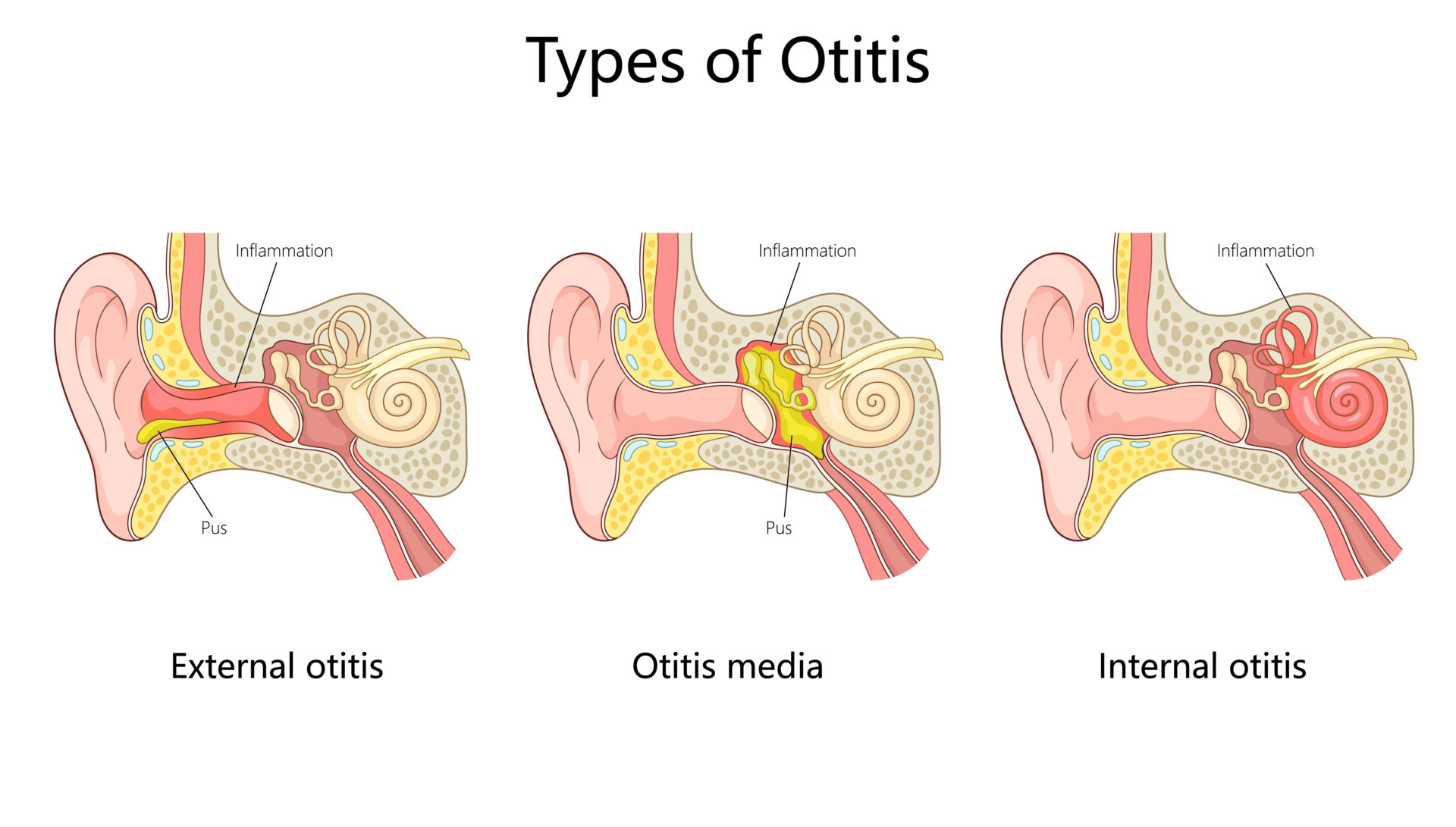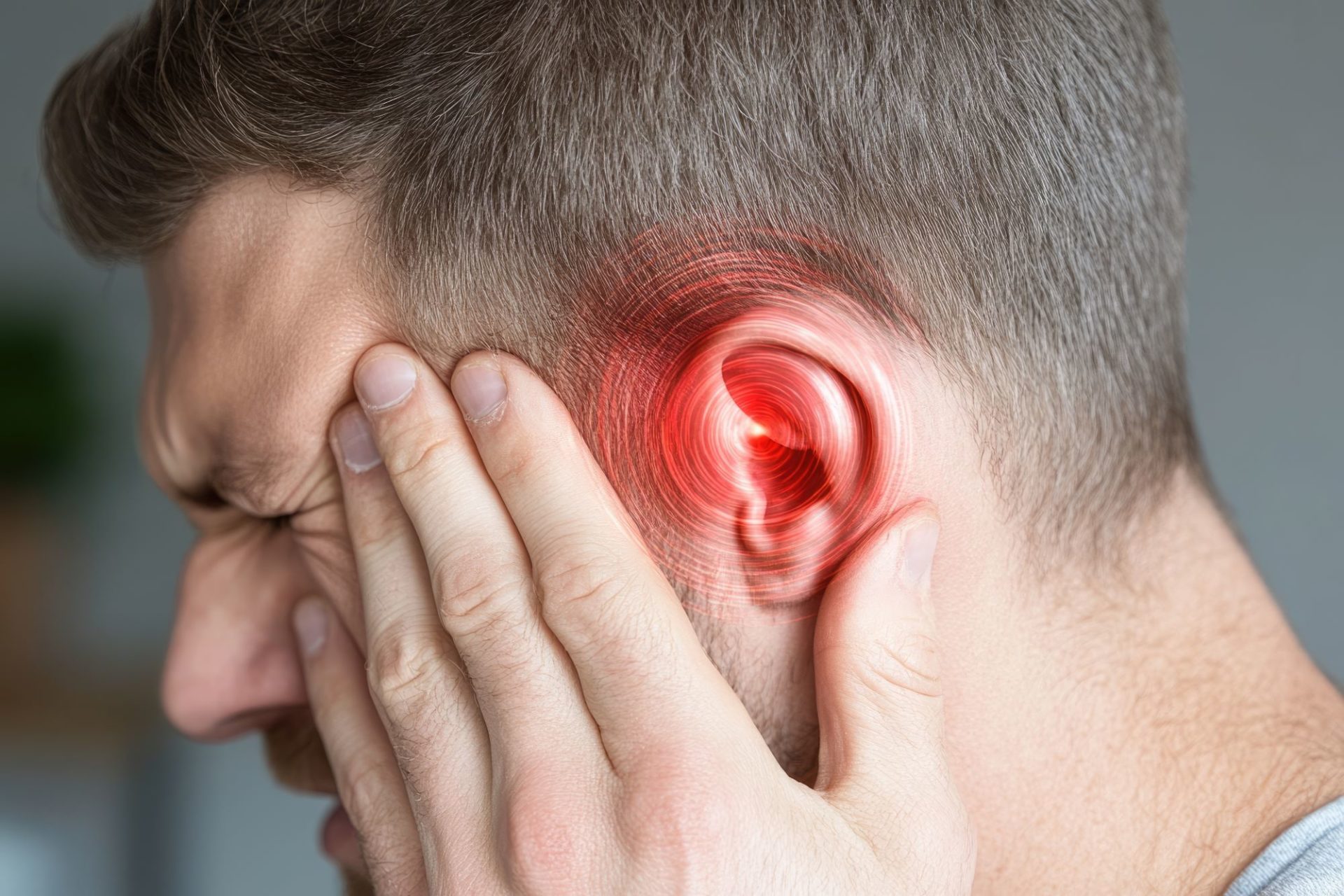Ear infections are incredibly common, especially among children, but they’re not something to ignore. That dull ache, pressure in the ears, or temporary muffled hearing might seem like a minor inconvenience at first. However, what many people don’t realise is that, if left untreated or if they become chronic, ear infections can potentially lead to hearing loss.
Understanding ear infections
Ear infections typically occur when bacteria or viruses cause inflammation and fluid build-up in the ear. This can occur in different parts of the ear, but most commonly affects the middle ear, the space just behind the eardrum. This condition is called otitis media.
There are a few types of ear infections, these include:
- Acute otitis media, a sudden infection, often painful, with fluid and inflammation in the middle ear.
- Otitis media with effusion, the fluid remains trapped in the middle ear after the infection subsides, often without pain but possibly affecting hearing.
- Chronic otitis media, a long term infection or repeated infections that can lead to permanent damage.
These infections are especially prevalent in children due to their developing immune systems and narrower eustachian tubes (the canals that connect the middle ear to the back of the throat). But adults aren’t immune from them either.

How do ear infections affect hearing?
When an ear infection occurs, fluid builds up in the middle ear. This fluid interferes with the way sound travels through the ear, causing temporary hearing loss, sometimes described as a “blocked” or “muffled” sensation.
Most of the time, this hearing loss is temporary. Once the infection clears and the fluid drains, hearing returns to normal.
But here’s where it gets serious. Repeated or untreated infections can cause lasting problems.
Chronic fluid buildup
If fluid lingers in the middle ear for weeks or months, it can interfere with the movement of the eardrum and the tiny bones responsible for conducting sound, leading to sustained hearing difficulties.
Eardrum damage
In some cases, pressure from fluid can cause the eardrum to rupture. While the eardrum can heal, repeated ruptures or scarring may lead to permanent hearing loss.
Damage to the ears structure
Chronic infections can sometimes spread to the inner ear or affect the bones and membranes, damaging the auditory system. In rare cases, especially when untreated, infections can reach the cochlea (the hearing organ) and cause sensorineural hearing loss, which is often permanent.
Developmental impact in children
Even temporary hearing loss from ear infections can have developmental consequences in children. During critical periods of speech and language development, reduced hearing can lead to delays in communication skills, learning difficulties, and behavioural challenges.

Who is most at risk?
While not every ear infection leads to hearing loss, certain individuals are more vulnerable to complications. People who experience frequent ear infections, especially within a short period of time, are at higher risk of developing chronic conditions that affect hearing. Children who have structural differences, such as cleft palates or eustachian tube dysfunction, may also experience more persistent issues with ear infections.
Environmental and lifestyle factors play a role, too. For instance, exposure to tobacco smoke or air pollution can irritate the respiratory tract and increase the likelihood of ear infections, particularly in children. Allergies or chronic sinus problems can also lead to inflammation and congestion that block proper drainage from the ears, making infections more likely and more difficult to resolve completely.
Neglecting or improperly treating ear infections, such as not completing a prescribed course of antibiotics, can allow the infection to worsen or recur, increasing the risk of complications, including hearing loss.

Signs to look out for
After an ear infection has been treated, it’s important to remain vigilant. Signs that hearing might still be affected include a lingering sensation of muffled or diminished sound, difficulty understanding speech (especially in noisy environments), and a sense of pressure or fullness in the ears. In children, indicators may include unresponsiveness to sound, delays in speech development, or a tendency to increase the volume on electronic devices.
If any of these signs persist for more than a few days after treatment, it’s a good idea to follow up with a healthcare provider or audiologist. Early intervention is key to preventing long-term hearing problems.
Preventing long term hearing problems
The good news is that most hearing loss related to ear infections can be prevented with prompt treatment and good follow-up care.
If you or your child develops symptoms of an ear infection, such as ear pain, fever, or sudden trouble hearing, it’s important to seek medical advice. Early treatment with antibiotics or other medications can usually resolve the infection before it causes lasting damage.
Finishing any prescribed medication is also crucial, even if symptoms improve. Stopping treatment early can lead to antibiotic resistance or allow the infection to return stronger.
If you’re experiencing recurring ear infections, it might be time to visit an audiologist. An audiologist can provide you with advice and treatment options to help improve your hearing.
At Sutton Hearing Centre, we have many years of experience dealing with customers who suffer from hearing loss and other hearing issues. We have the expertise and knowledge to provide you with the best solution. Get in touch with our team today to receive the help you need.

